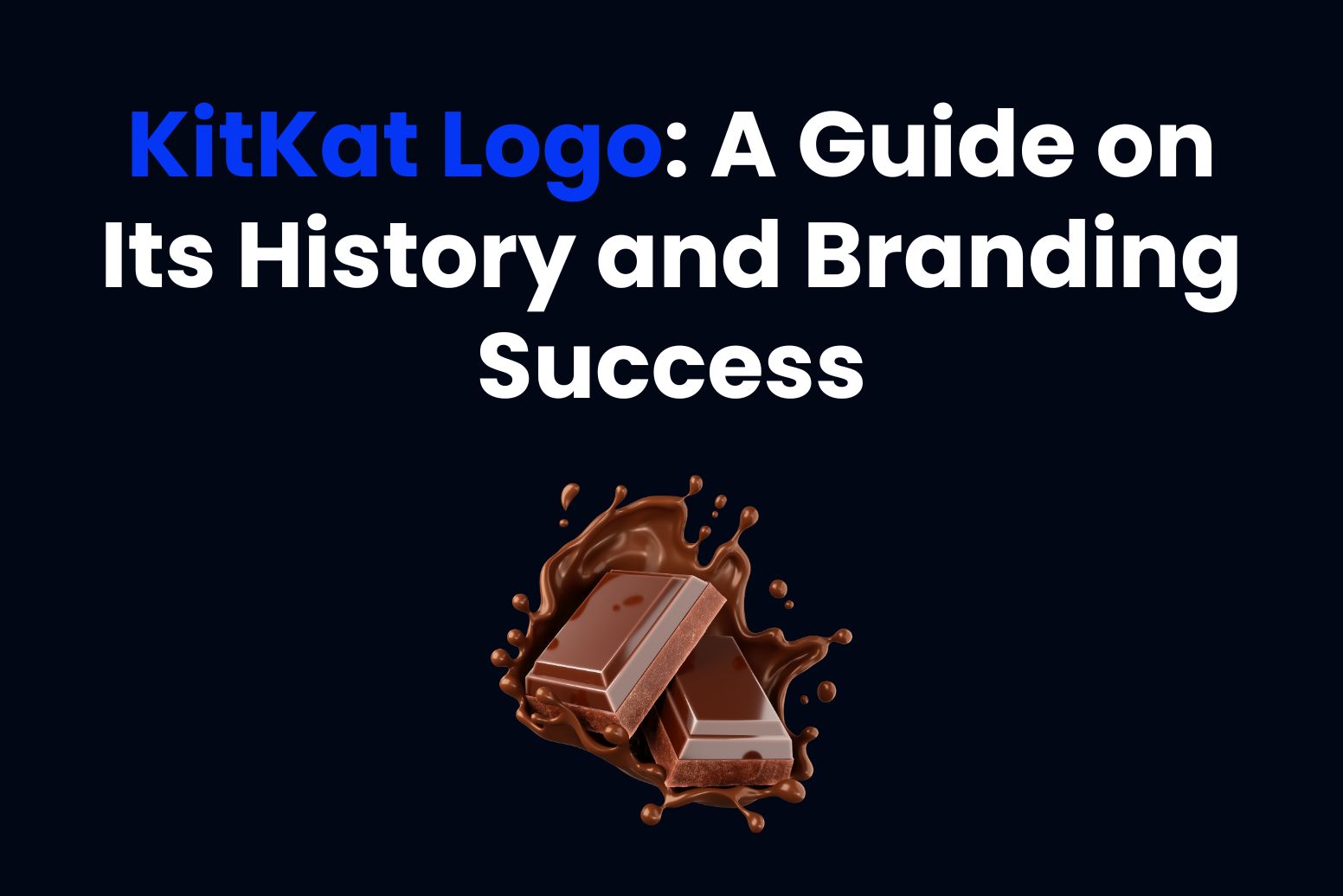Kit Kat is an iconic logo in the world of snacks. The logo design of Kit Kat will come to mind immediately. Its sophisticated and eye-catching design repeats not only chocolate lovers but also create a visual art to its lovers. KitKat’s logo design has changed many times since its birth, and each time has been adapted to modern taste while maintaining timeless charm. For graphic designers, the transition of the KitKat logo design is an attractive case study. In this trip we will explore KitKat’s logo design and its theme.
Part 1: All Grown-Up – Origins of KitKat’s Iconic Logo
The KitKat logo is more than just a simple emblem; it has the arduous responsibility of defining a brand. The history is showing that how the KitKat began, the civilization travels all the way back to the break of day. There was an initial light at which careful design and branding choices had come together into what would now be known in the end as a final result.
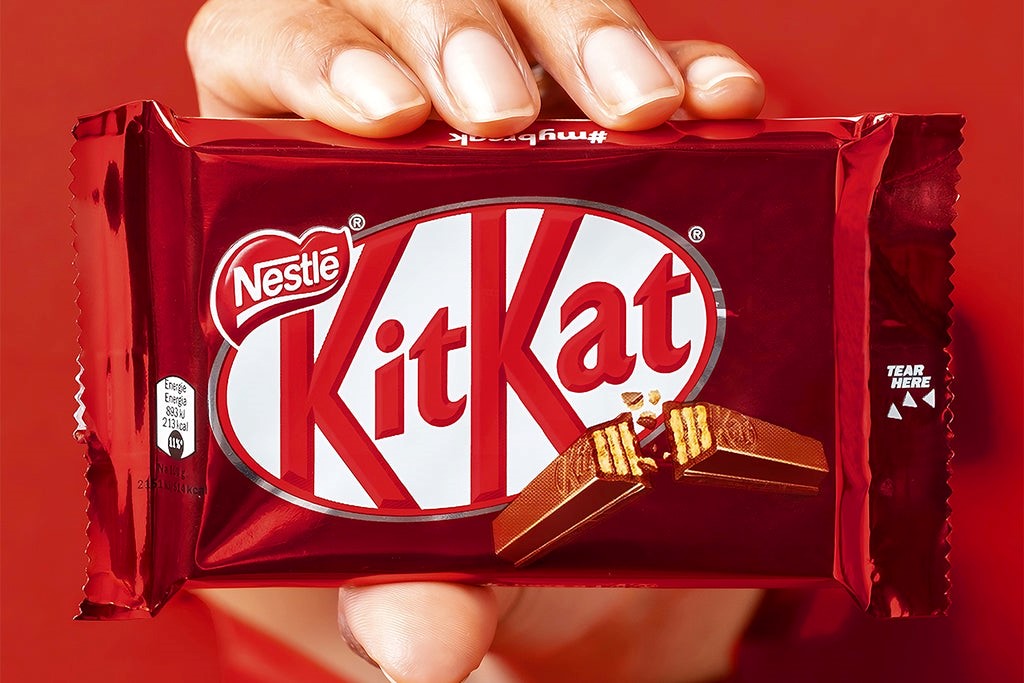
Origins of the KitKat Brand
Rowntree’s first launched the KitKat brand in 1935. Being a confectionery company with its operations in York, England, it was marketed initially as “Rowntree’s Chocolate Crisp.” Two years later in 1937, the same company renamed this product KitKat, which ultimately initiated the venture to build brand identity.
Pre-Birth Era of Logo
The original KitKat logo was simple: it was as plain as the nature of the chocolate bar-it was an eating snack, with clear lines and lettering that had to be as readable as they were simple. Early on in the company, red and white color scheme was introduced, as this is able to send energy and excitement.
Growing Over Time
These decades were able to change the logos of KitKat many times adapting to the varying design trends. From the 1940s, a logo gradually came to exist in a modern oval form currently widely known in public circles. It rendered the product clearly noticeable on store shelves and accentuated the visual mark of the trademark.
Part 2. Evolution of the KitKat Logo: Milestones Through the Years
The KitKat logo is funny, simple, and of good quality everywhere. Here, we would discuss the best phases of KitKat’s development in relation to its logo so that how they have despite all challenges always captured the hearts of people around the world through their delicious scrumptious chocolate bar products.
1935 – 1937
In the busy mid-1930s, the birth of Rowntree’s Chocolate Crisp marked an important chapter in the world of branding. Born in 1935, this delightful treat laid the foundation for what we now recognize as the KitKat logo design. The original KitKat logo design of 1935 was modestly elegant and symbolized the taste and style of the time.
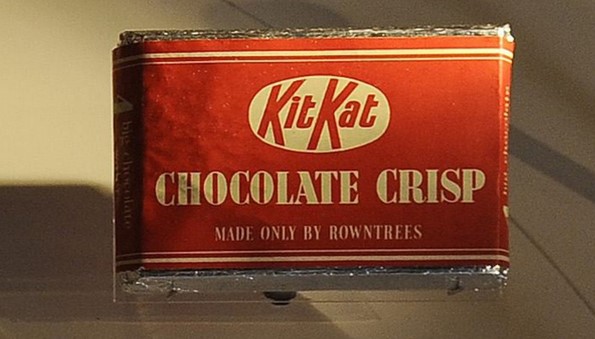
1937 – 1945
1937 was an important moment in the history of a cool logo design. The rebranding of the product and the addition of the name “Kit Kat” led to a major change. This change was not just a fix, but laid the foundation for the logo that everyone today recognizes. To maintain continuity with the past, the red background of the logo and the chocolate crisps remained intact.
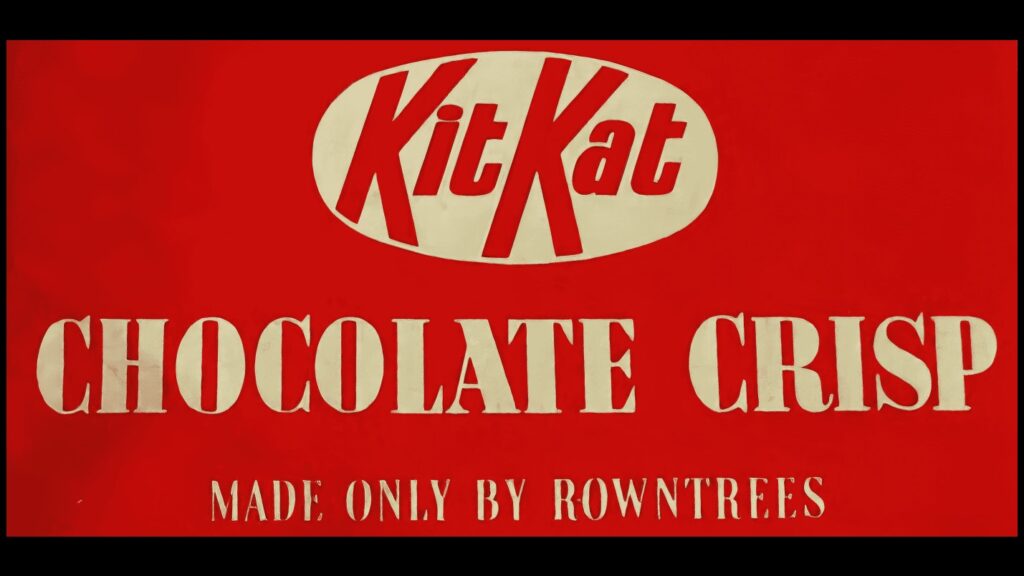
1945 – 1947
During the short and interesting period of 1945-1947, KitKat’s logo design underwent a change that reflected the times. World War II disrupted various industries, including chocolate business, leading to the birth of KitKat’s dark chocolate version of the Blue Label. Changes to this product required a parallel shift in visual identity.
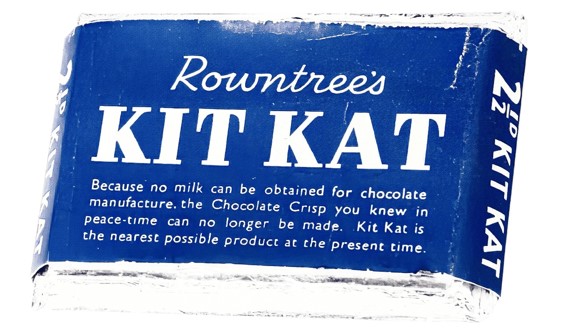
1947 – 1988
In 1947, when World War II ended, KitKat’s logo design returned home. Red and white signature colors have succeeded. It was a renewal that not only revived the original color, but also introduced thoughtful improvements that would define the logo for more than 40 years. The highlight of this redesign is an enlarged white ellipse with the character “Kit Kat”.
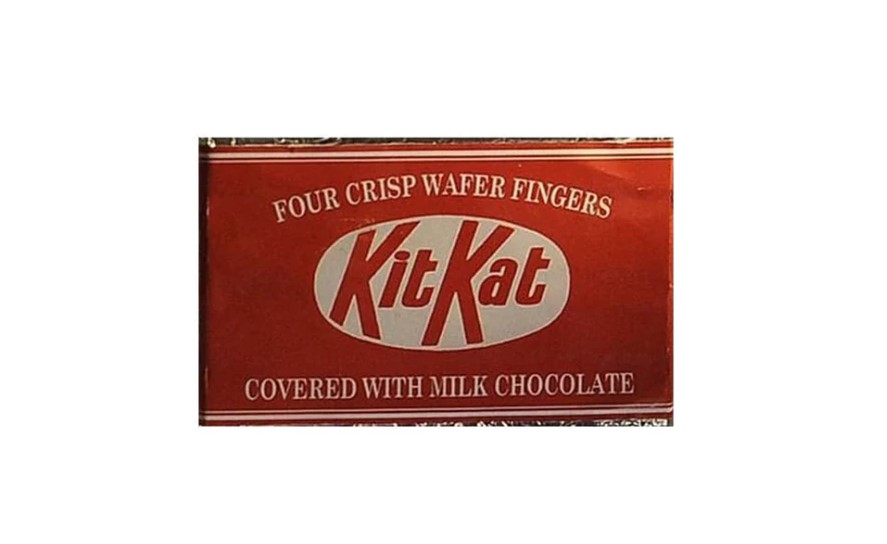
1988 – 1995
In 1988, a new development in KitKat’s logo design marked the arrival of a new era of corporate transformation. In this year, Nestlé acquired the brand and immediately redesigned the logo by reflecting the new ownership. One of the most notable changes was the removal of all additional characters that had previously embellished the logo.
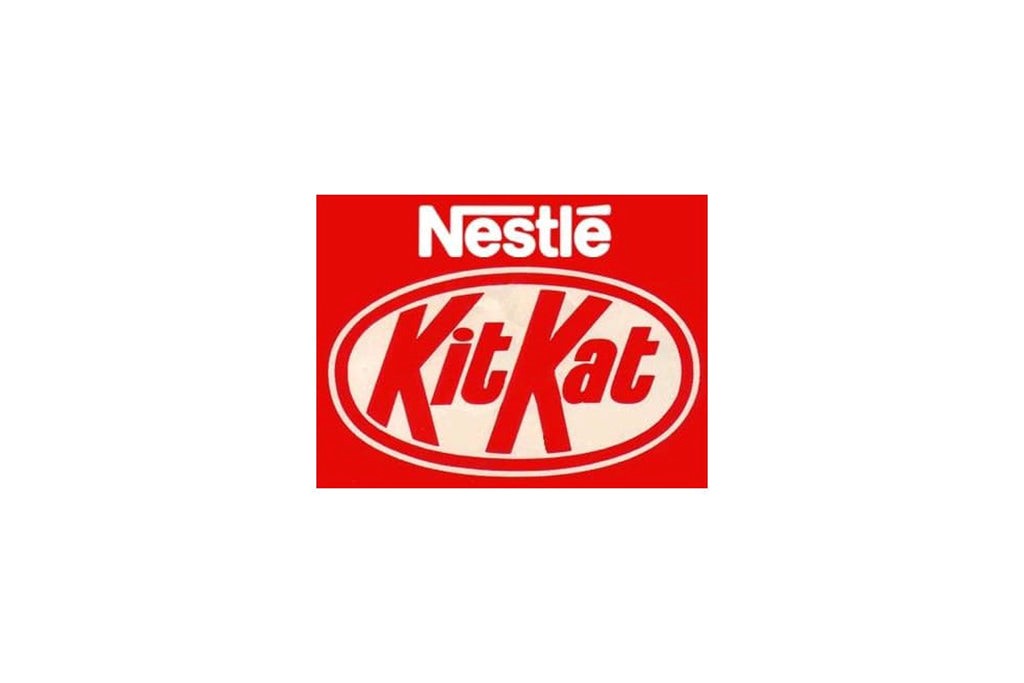
1995 – 2004
From 1995 to 2004, KitKat’s logo design became delicate and sophisticated. The changes made in 1996 were not revolutionary, but their delicacy and accuracy transformed the emblem into something bolder and elegant. The main engraving was carefully reworked with contours and lines and carefully improved. The result was a stronger and more stylish in look.
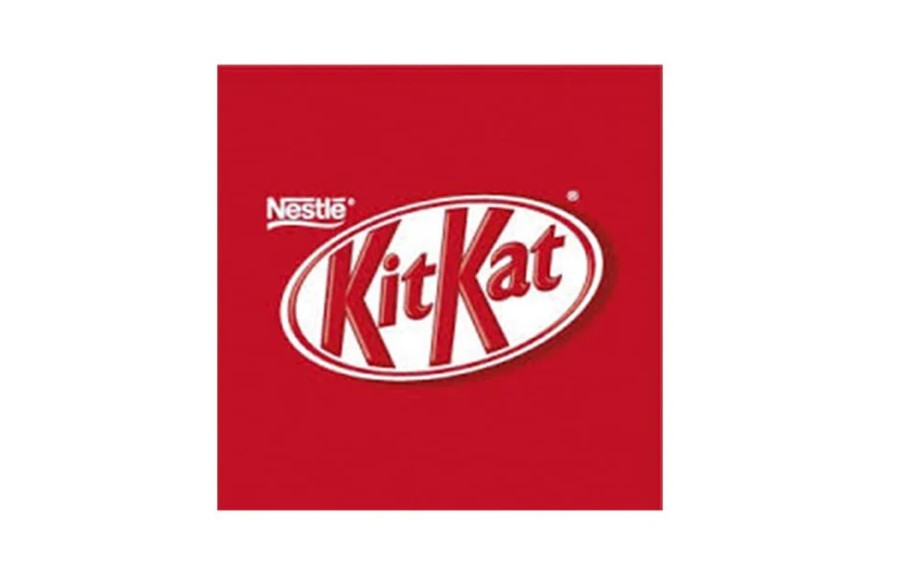
2004 – 2017
The KitKat logo design story from 2004 to 2017 is characterized by visual depth and elegance exploration. During this period, delicate but impactful modifications were introduced, creating a more voluminous and sophisticated emblem. The central element of the KitKat logo design, was placed slight diagonally.
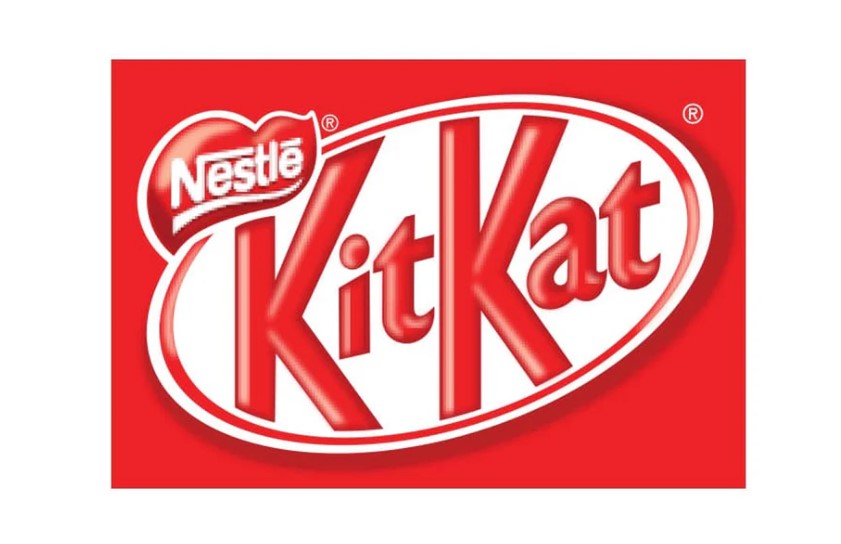
2017 – Present
In 2017, KitKat’s logo design began its rejuvenation path, strengthening its presence and adapting it to modern taste. This change was intended for refinement rather than reinvention, and strengthened existing elements to resonate with modern sensibilities. The logo line was reinforced and polished, resulting in a sharper and clearer appearance. This logo clearly presenting cute logos for your brand.
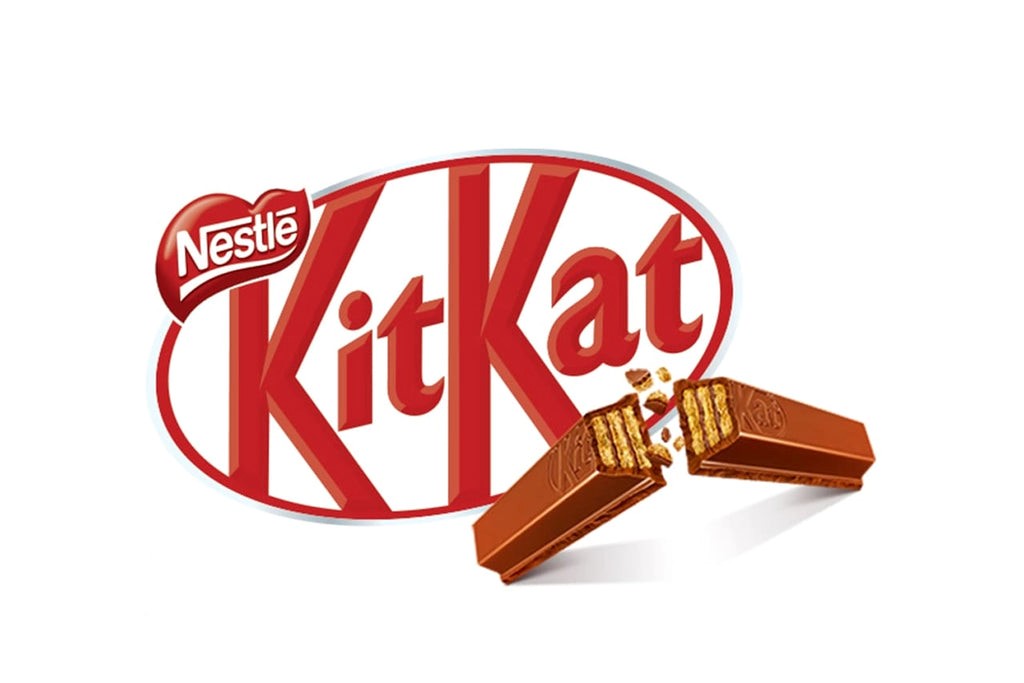
Part 3. Design Analysis of the KitKat Logo: Colors, Fonts, and Style
From the careful beginnings of 1935 to today’s sophisticated modern emblems, the KitKat logo has undergone a major transformation. This analysis delves into some important issues reflecting the path taken by this iconic logo so that graphic designers and branding enthusiasts are inspired by it.
Color palette consistency
One of the invariant aspects of KitKat’s logo design is its consistent use of red and white color palettes. From the early Rowntree’s Chocolate Crisp to the present, the rich red is a unified theme, symbolizing energy and appetite. Variations in color have changed with the times reflecting changes in brand strategy, but the color identity at the core remains unshakable.
Transformation of typography
The typography of the KitKat logo has been transformed many times, from early elegant serif to recent bold custom sans serif. Logo fonts are the visual voice of a brand by blending style and identity to every letter. It shows how typography can be a powerful tool to convey individuality and value.
Image Integration
The recent logo stage integrates the image of crispy chocolate. This is one of those visual clues that are reflective of the product itself, giving it a sensory character in design. This is an illustration of how images make a deep connection between what the logo symbolizes and what it actually spells out.
Strategic Brand Alignment
The acquisition by Nestlé and subsequent incorporation of the Nestlé logotype into the KitKat logo design demonstrates a subtle balance between corporate branding and consumer friendliness. Seamless collaboration between parent and child brands reflects outstanding technology in brand cohesion and tells us how design can be a strategic business tool.
Part 4: Consistent label and unique taste
Since its release in 1958, the catchphrase “Have a break, Have a KitKat.” This catchy and impressive catchphrase established Kit Kat as a social snack that can be enjoyed at any time. The brand also offers a variety of unique flavors, with over 200 options. From traditional things such as milk chocolate and dark chocolate to innovative things such as soy sauce, Kit Kat has everything that satisfies every taste.
Flavours | Description |
Milk Chocolate | The classic KitKat flavour with smooth and creamy milk chocolate. |
Dark Chocolate | A rich and indulgent option for dark chocolate lovers. |
Matcha Green Tea | A unique blend of sweet white chocolate and fragrant green tea. |
Strawberry Cheesecake | A delightful combination of creamy white chocolate and fruity strawberry flavour. |
Wasabi | A bold and unconventional choice, combining spicy wasabi with smooth white chocolate. |
KitKat Social Media Statistics
KitKat’s social media strategy has proven successful in maintaining a strong brand presence, building meaningful connections with audiences, leveraging moment marketing and brand collaboration to promote engagement and increase brand awareness.
Platform | Followers/Connections | Engagement Rate |
500,000+ | 5% | |
1,200,000+ | 3% |
Part 5: Arvin AI: Create Professional Design for Personal Branding
A good personal brand starts with a strong logo. By making a logo that plays a vital role in making your brand instantly recognizable, memorable, and impactful. Arvin AI makes this process much easier by offering advanced tools for users to create professional designs tailored to their unique branding needs. By using Arvin AI, launching a new business or even reinventing personal brand means you will get everything to help you stand out from a very busy marketplace.
Key Features of Arvin AI
- Customizable Templates: Arvin AI has a collection of templates for various industries, so you can make the design unique to your brand.
- Easy-to-use Interface: This interface is very user-friendly and accessible even to those who don’t have design experience.
- Suggestions with AI Power: Arvin AI processes information on your brand and then suggests an appropriate design concept.
- High Resolution Outputs: With the help of Arvin AI, the logos are high resolution and print ready for instant use on any website, social media, and printed materials.
- Customized Color and Fonts: Try a variety of colors and fonts for the perfect color combination.
- Easy Solution: Professionally create logos without the use of expensive designers.
Steps to Use Arvin AI for making Logo
Step 1: Explore the Design Platform
Start by visiting the logo creation page at Arvin AI using your preferred web browser. This platform is your gateway to designing the perfect logo for your brand.
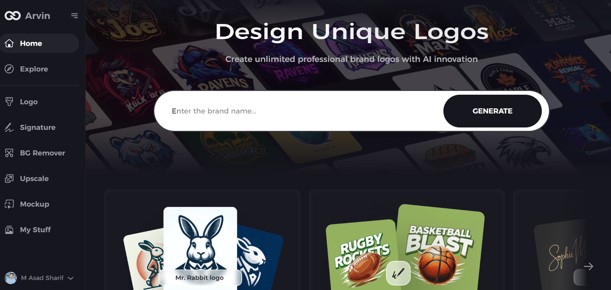
Step 2: Enter Business Details
Provide essential information about your business, such as its name and category. This helps the AI generate logo designs that align with your brand’s identity.
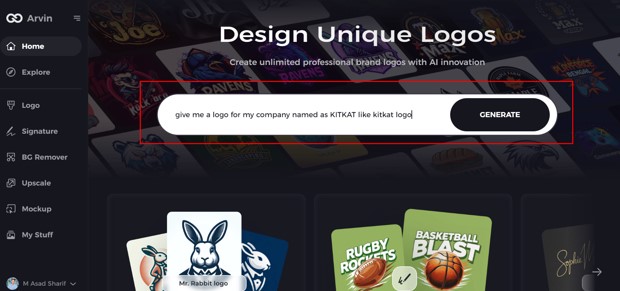
Step 3: Specify Your Industry
Choose the industry your business belongs to from the provided list. This selection allows the AI to tailor logo styles and elements that best fit your industry.
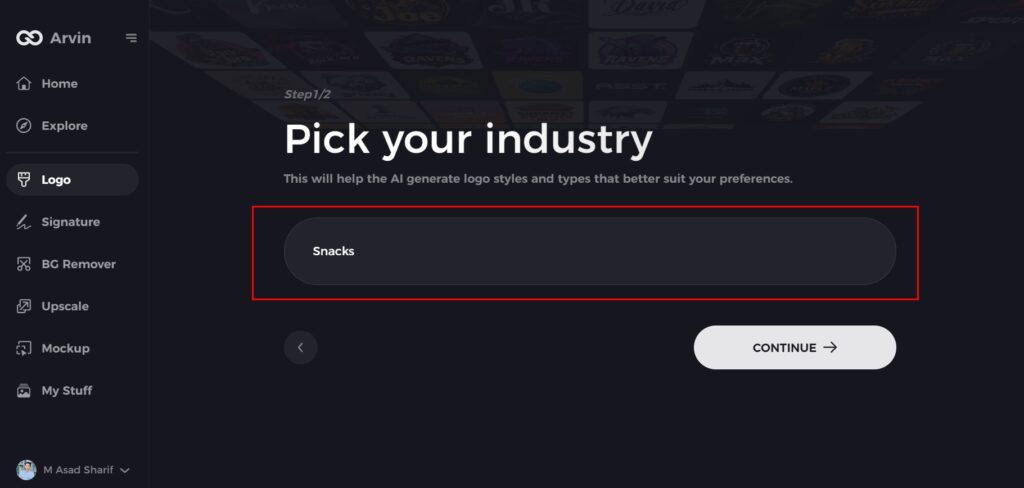
Step 4: Select a Design Style
Browse the available design styles and pick one that reflects your brand’s vision. If none feel right, skip this step and let the AI default to its creative inspirations.
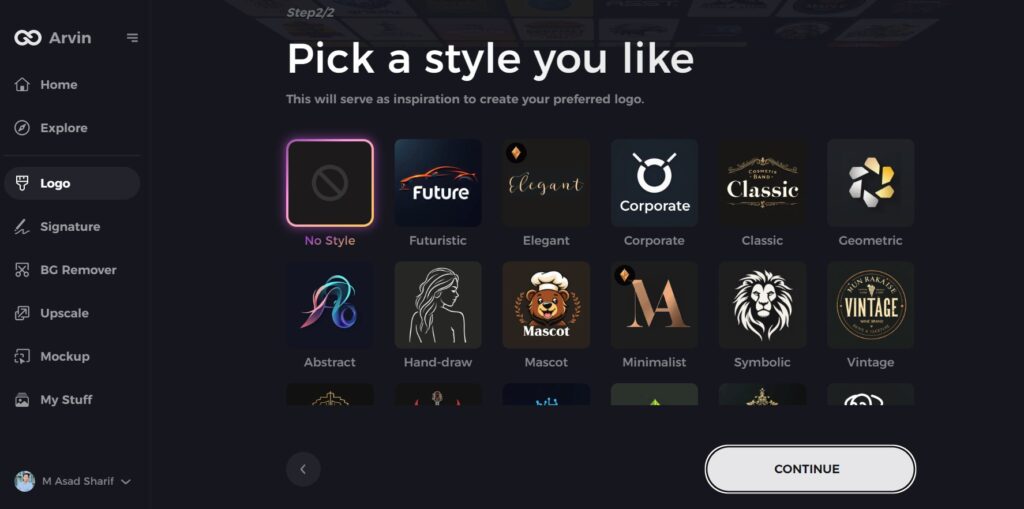
Step 5: Review Logo Ideas
The AI will present you with a variety of logo designs based on your input. Carefully evaluate these options to find the one that resonates most with your brand image.
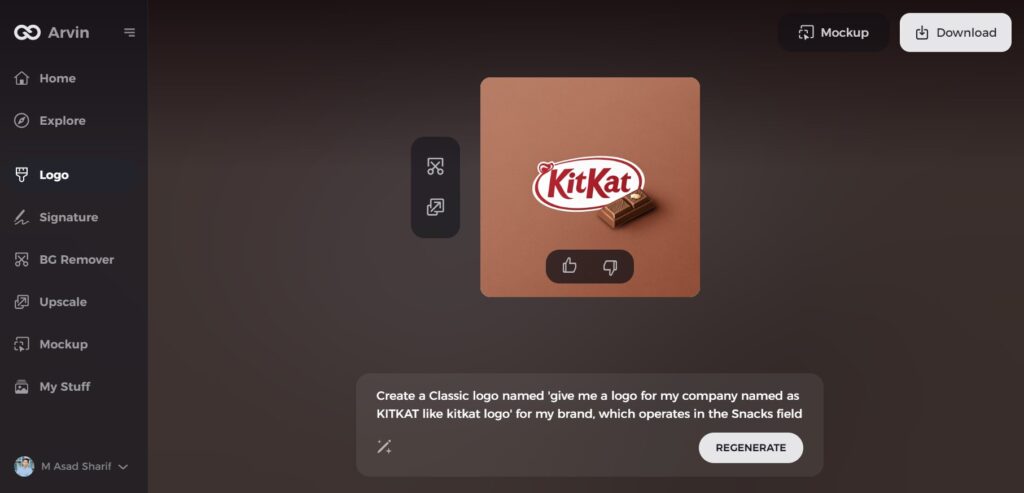
Step 6: Customize Your Logo
Once you’ve selected a design, personalize it to suit your preferences. Modify elements like colors, fonts, icons, and layouts to ensure the logo embodies your brand’s unique style.
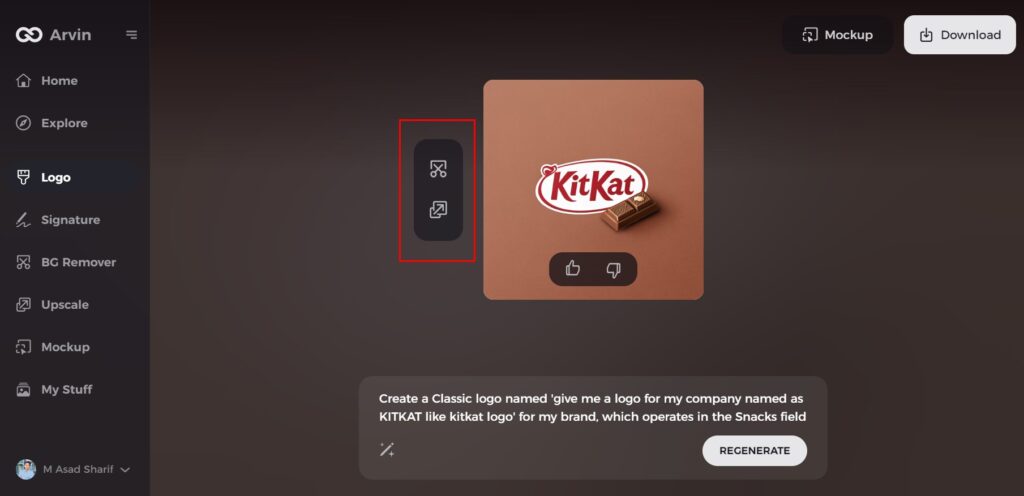
Step 7: Finalize and Download
When your logo is complete, download it in formats such as PNG or SVG. These versatile formats are ideal for digital platforms, social media, and printed materials.
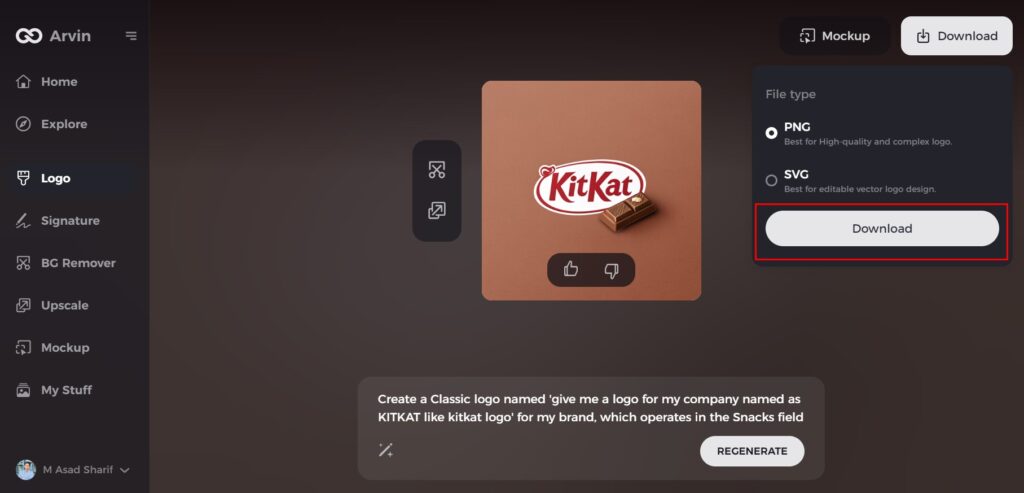
Part 6: Lessons from the KitKat Logo
The KitKat logo is very good branding. Such a simple logo yet powerful, it is made one of the most recognized logos around the globe. Here are some principles that make it this way and what you can adapt to your own branding:
Simplicity and clarity
The KitKat logo is quite simple and straightforward. Deep, bold lines and a minimalist design make the logo easily recognizable, even with a mere glance from a distance. For your personal logo, try simple, and above all, unforgettable in various environments.
Consistency for All Media:
KitKat has the same logo design in all media channels: packaging, advertisement, and digital media, helping to instill trust, while reiterating the brand. Your logo should remain consistent in color, font, and style wherever it is used.
Emotional Connection with Audiences
KitKat’s brand reflects enjoyment and rest, which can be seen in the tagline: “Have a break, have a KitKat.” It enables the customers emotionally to be linked with the logo that will intensify loyalty to the brand in them and further bring the brand closer to the people.
Conclusion
The KitKat logo is a true reason why a well-designed logo can make an ever-lasting difference. Simplicity and consistency, along with the elements, have made it a memorable symbol of understanding and enjoyment. Design an effective logo yourself with the tools of Arvin AI. Its advanced features, user-friendly interface, and wide range of choices enable you to design logos which represent your brand’s values and goals. From a business owner to a freelancer, Arvin AI can be of great assistance in standing out in a very crowded market.
FAQs
Why did KitKat change their logo?
After Goldman Sachs, the New York Jets and DC Comics turned the clock back on their branding, KitKat has joined the nostalgia party. But in this case, it isn’t an old identity making a return. It’s a new logo that’s designed to look retro while also modernising the brand.
What colors are prominent in the KitKat logo, and why?
The most dominant color combination is the red and white. They symbolize energy, a minimalist design, and a playful character for the brand.
How does Arvin AI enhance my logo designs?
Arvin AI has access to some of the more advanced technologies, which fine-tune logos according to your aspirations for the brand
What does the KitKat logo say to the business about branding?
A good memorable and impactful brand logo should have consistency, simplicity, and emotional appeal.

